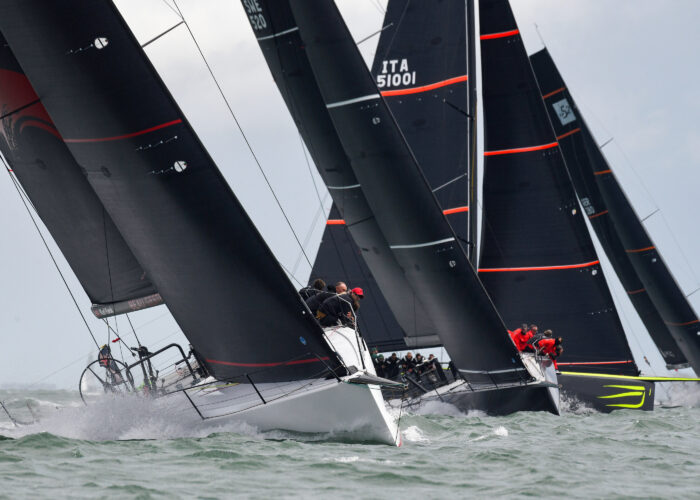This year the Royal Ocean Racing Club has been celebrating 100 years since the inaugural Fastnet Race led to the creation of the Club in 1925. RORC’s welcoming clubhouse in Cowes was therefore a fitting venue for the 2025 IRC Congress, bringing together a diverse group of owners’ representatives from around the world including Europe, Asia and Australasia as well as the Royal Ocean Racing Cub and Yacht Club de France as owners of the IRC Rule.
After seven years at the helm, Michael Boyd handed over the chair to Andrew McIrvine, marking a fresh chapter for the rule that underpins so much of the world’s offshore and inshore competition. The global representation highlighted the broad international participation and collaboration that define IRC, with Congress offering a valuable forum for race organisers, measurers and rating committees to collaborate on rule development, event coordination, and the continued consistency of the rating system across continents.
Reports from around the world reflected a consistent picture of stability with premier regattas and offshore events continuing to use IRC for major trophies, reaffirming IRC’s strong global position. Within regions IRC continues to offer high quality club racing, and many nations also report growing adoption of secondary certificates, and increased equipment inspection at events. An exciting proposal is for an IRC 600 Trophy, a new initiative to link the major 600-mile offshore races worldwide into a cumulative 2-year series celebrating top overall performers, with a flexible scoring system to encourage broad participation.
The IRC Technical Committee proposed several rule and definition changes for 2026, all of which were approved. Along with some minimal clarifications and updates, rule changes include a new provision allowing boats rated without OSR compliant lifelines to fit them temporarily for events without invalidating their certificate, supporting both safety and participation flexibility.
Measurement definitions for mainsails and spinnaker poles have been clarified to promote consistent international measurement practices. Updates to the Age Date and Hull Shell definitions now explicitly mention transom interceptors and modifications to hull length, which will be reflected in the application of age date. In addition, the allowable angle between twin rudders, before they are rated as lifting foils, has been increased to accommodate evolving design trends without penalising conventional configurations.
Collectively, these refinements demonstrate IRC’s forward-looking approach—balancing innovation with fairness and maintaining its position as a trusted, internationally recognised rating rule that continues to evolve in step with modern yacht design and racing practice.
Overall, the Congress celebrated IRC’s global cohesion, technological progress, and emphasis on fairness, with shared determination to strengthen participation and visibility at both grassroots and elite levels of offshore sailing.
IRC Congress 2025 Minutes and papers
IRC 2026 Rule changes and full Rule text

 Admiral's Cup 2025 (c) RORC/Rick Tomlinson
Admiral's Cup 2025 (c) RORC/Rick Tomlinson